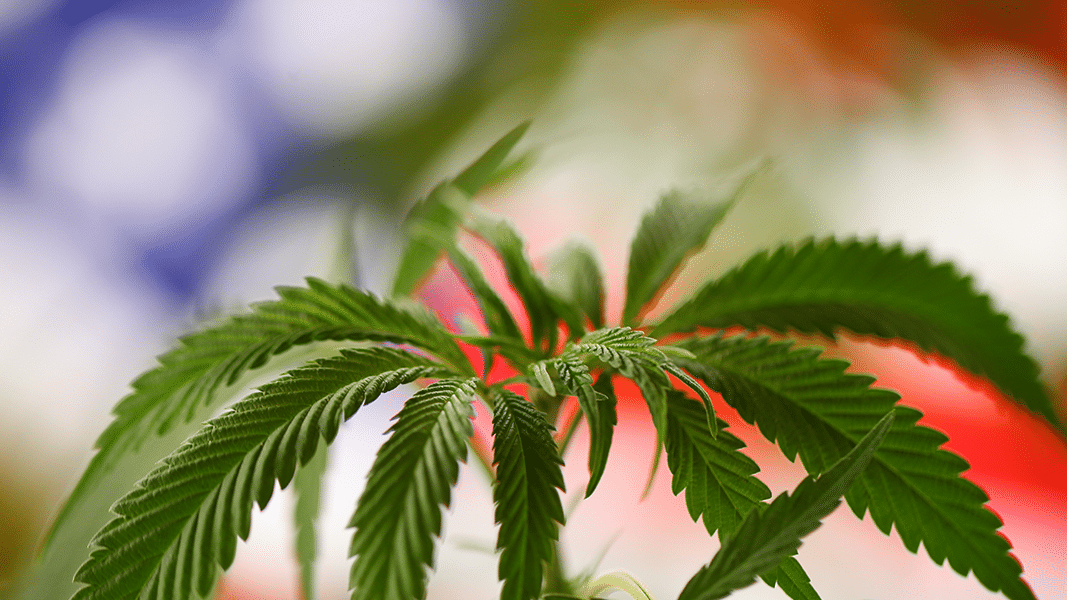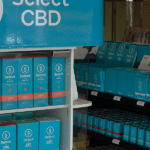Several cannabis-related bills have been introduced by the U.S. Congress in the current 114th Session. Three of these bills relate specifically to the isolate cannabidiol (CBD), while another—the Industrial Hemp Farming Act of 2015—could significantly impact the legal status of low-THC varieties of Cannabis and whole plant preparations in general.
These bills are discussed below in order of their filing dates.
The Industrial Hemp Farming Act of 2015 (S.134 & H.R. 525).
The Industrial Hemp Farming Act of 2013 was officially re-filed in both the U.S. Senate (S.134) and the U.S. House (H.R. 525), and is thus now the Industrial Hemp Farming Act of 2015.
This short and simple Act seeks to remove industrial hemp from the Controlled Substances Act of 1970 (“CSA”) by supplementing the CSA definition of “marihuana” (21 U.S.C. 802(16)) so that “the term ‘marihuana’ does not include industrial hemp.” The Act adopts the definition of “industrial hemp” encoded in the §7606 of the Agricultural Act of 2014 (aka the “Farm Bill”) as follows:
“[T]he term ‘industrial hemp’ means the plant Cannabis sativa L. and any part of such plant, whether growing or not, with a delta-9 tetrahydrocannabinol [THC] concentration of not more than 0.3 percent on a dry weight basis.”
It is noteworthy that unlike the definition of “marihuana,” the definition of industrial hemp does not exclude plant resins, a legislative nuance that could prove to be very significant with respect to CBD-rich oil extraction.
The Senate version of the Industrial Hemp Farming Act was filed in January by Sen. R. Wyden (D-OR) on behalf of himself and prime co-sponsors Sen. Merkley (D-OR) and Sen. McConnell (R-KY) and Paul (R-KY). The House version, also introduced in January, was filed by Rep. T. Massie (R-KY) on behalf of himself and numerous bipartisan co-sponsors.
The only difference between these sister bills is located in Section 3 of each. Both bills seek to amend §201 of the CSA by including the following:
“(i) Industrial hemp determination.—If a person grows or processes Cannabis sativa (sic) L. for purposes of making industrial hemp in accordance with State law, the Cannabis sativa (sic) L. shall be deemed to meet the concentration limitation under section 102(57).” However, the Senate version adds this qualifier to the aforementioned final sentence: “unless the Attorney General determines that the State law is not reasonably calculated to comply with section 102(57).”
As of Labor Day 2015, only nine U.S. senators have co-sponsored S.134. If you support the legalization of industrial hemp, contact your senator by phone, mail and/or email to request that they co-sponsor S.134. For more information or to communicate to your senator, go to www.VoteHemp.com and click the “Take Action” tab.
The Compassionate Access, Research Expansion & Respect States Act (S.683)
Known as the CARERS Act, this legislation has gained support from multiple drug policy and Cannabis organizations. It is an important bill, a significant step forward for medical marijuana patients in many respects, with the arguable exception that the CARERS Act would remove marihuana from Schedule I (dangerous with no medical value) and re-categorize it as a Schedule II controlled substance. Schedule II is reserved for substances with a high potential for abuse leading to severe psychological or physical dependence (oxycodone, fentanyl, morphine, hydrocodone, methadone, and amphetamine, among others). Project CBD maintains that herbal Cannabis should be entirely de-scheduled.
Filed by Sen. Cory Booker (D-NJ) in March, the CARERS Act specifically seeks to remove cannabidiol from the CSA by stating that the term “marihuana” does not include “cannabidiol,” and by further defining “cannabidiol” as meaning “the substance cannabidiol, as derived from marihuana or the synthetic formulation, that contains not greater than 0.3 percent delta-9-tetrahydrocannabinol on a dry weight basis.”
The CARERS Act does not require states to implement a medical marijuana program or change their existing marijuana laws. Rather, the Act seeks to accomplish four main goals:
- It affirms the right of states to form and enforce their own medical marijuana laws by amending the CSA to exempt state-compliant individuals from federal prosecution under the CSA;
- It allows Veterans Affairs physicians operating in legal states to recommend medical marijuana to military veterans;
- It allows financial services and banking for marijuana outlets operating in legal states by providing a safe harbor to banks and credit unions (and their officers and employees) that provide financial services to marijuana-related businesses engaged in activities in compliance with state law; and
- It removes unnecessary bureaucratic barriers to research and ends NIDA’s research monopoly.
For more information, contact Americans for Safe Access, which has championed the CARERS Act on Capital Hill.
The Charlotte’s Web Medical Access Act of 2015 and the Therapeutic Hemp Medical Access Act of 2015.
These are quasi-sister bills—with some notable differences. Both seek to remove “cannabidiol” and “cannabidiol-rich plants” from the CSA by changing the CSA’s definition of “marihuana” so that CBD and CBD-rich plants “shall not be treated as controlled substances.” Both bills amend the definition of “marihuana” by stating the term does not include “cannabidiol” or “cannabidiol-rich plants.” Both bills define “cannabidiol” as “the substance cannabidiol, as derived from a cannabidiol-rich plant.” Finally, both declare that nothing in the bill(s) “shall prohibit or otherwise restrict any activities related to the use, production, or distribution of marihuana in a state in which such activities are legal under state law.”
The Charlotte’s Web Medical Access Act, promoted by Realm of Caring lobbyists, was filed by Rep. S. Perry (R-PA) in March. Two months later Sen. C. Gardner (R-OR) filed the Therapeutic Hemp Medical Access Act of 2015.
Here’s where the two bills differ:
The Charlotte’s Web Medical Access Act of 2015 (H.R. 1635):
- Supplements the CSA definition of “marihuana” by duplicating the definition of “industrial hemp” historically distinguished in §7606 of the Farm Bill mentioned above, but instead uses that definition to define “cannabidiol-rich plant.” That definition is: “[T]he term ‘cannabidiol-rich plant’ means the plant Cannabis sativa (sic) L. and any part of such plant, whether growing or not, with a delta-9 tetrahydrocannabinol concentration of not more than 0.3 percent on a dry weight basis.” (Emphasis added in bold.)
- Further exempts “cannabidiol” and “cannabidiol-rich plants” from the 1938 Federal Food, Drug, and Cosmetic Act (21 U.S.C. 301, et seq).
- Includes a three-year sunset provision that states “[T]he provisions of this Act, and the provisions inserted into the Controlled Substances Act by this Act, shall cease to apply on the date that is 3 years after the date of enactment of this Act.”
The Therapeutic Hemp Medical Access Act of 2015 (S.1333):
- Supplements the CSA definition of “marihuana” by almost duplicating the definition of “industrial hemp” historically distinguished in §7606 of the Farm Bill. That definition is: “[T]he term ‘cannabidiol-rich plant’ means the plant Cannabis sativa (sic) L. and any part of such plant, whether growing or not, with a tetrahydrocannabinol concentration of not more than 0.3 percent on a dry weight basis.” (Emphasis added due to the omission of the “delta-9” qualifier.)
- Includes a flawed definition of “tetrahydrocannabinol concentration” that is ripe for confusion and misinterpretation. That definition is: “(A) the percent of the delta-9 tetrahydrocannabinol content per dry weight of any part of the plant Cannabis sativa (sic) L. or per volume of weight of marihuana product; or (B) the combined percent of the delta-9 tetrahydrocannabinol and tetrahydrocannabinolic acid in any part of the plant Cannabis sativa (sic) L., regardless of moisture content.” (Emphasis added due to the inclusion of THCA, the raw non-psychoactive version of THC, which, when heated, converts to psychoactive THC. Merging THC and THCA content may distort the measured percentages; moreover, non-psychoactive cannabinoids do not appear to be included in the testing protocol, which could also skew the results.)
- Does not include a sunset clause or an exemption from the 1938 Federal Food, Drug, and Cosmetic Act.
It is beyond the scope of this legislative sumary to predict when or whether any of these particular bills will get enacted during the current Congressional session. Nor does this summary address H.R. 1940 (the Respect State Marijuana Laws Act of 2015), which was introduced in the U.S. House of Representatives and will, if passed, protect state marijuana legalization laws from federal interference. This measure does not specifically mention CBD. There are also three Cannabis-related amendments to H.R. 2578 (the Commerce, Justice, Science, and Related Agencies Appropriations Act of 2016) that do not reference CBD. The passage of any of these measures would be a positive development for medical marijuana patients.
Joy Beckerman is president of Hemp Ace International. She serves as a legal analyst for the Hemp Industry Association’s Cannabinoids Safety Committee. Copyright, Project CBD. May not be reprinted without permission.







